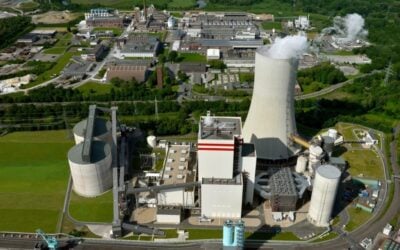Nancy Pfund of DBL Partners, which focuses on investments that provide social and environmental benefits as well as profits. Image: DBL.
Last year was a “seminal year” for energy storage, where the technology moved from “dream to reality”, according to impact investor Nancy Pfund, one of the earliest backers to Tesla and SolarCity.
Pfund, whose firm DBL Partners specialises in adding companies to its portfolio that offer both healthy returns and positive social impact, told Energy-Storage.News that while it isn’t quite in the mainstream yet, battery storage’s profile was boosted enormously during 2016.
Enjoy 12 months of exclusive analysis
- Regular insight and analysis of the industry’s biggest developments
- In-depth interviews with the industry’s leading figures
- Annual digital subscription to the PV Tech Power journal
- Discounts on Solar Media’s portfolio of events, in-person and virtual
In addition to having spotted Tesla and SolarCity early, with Pfund sitting on the boards of both at various times, DBL’s investments in energy storage and related companies include Advanced Microgrid Solutions, Off-Grid Electric and flow battery maker Primus Power.
“It was a seminal year for energy storage, 2016. Energy storage really moved from dream to reality,” Pfund said.
“The hard work that lots and lots of companies have been doing for several years to get battery storage into primetime, they flipped the switch on that. While we don’t have widespread energy storage yet - we definitely took the important first steps toward that reality.”
Pfund cited the example of Tesla’s purchase of SolarCity as a gamechanger during the year, describing it not only as a statement about energy storage’s role in transportation but also in “greening the grid”. She also said the development of different batteries for different applications, such as flow batteries was a big step, as was the response of California to the Aliso Canyon gas leak, deploying around 100MW of energy storage in less than six months. The latter was a significant indicator that California is gearing up to do away with gas peaker plants altogether, with Pfund predicting that no more new facilities will be built in the state in five years’ time.
“The handwriting on the wall is no more peaker plants, no new peaker plants in California,” Pfund said, calling the shift “a tremendous reallocation of expensive resources away from a traditional plant structure towards an integrated storage, software and renewable solution”.
Customer profile changing
According to Pfund, the past year has seen utilities and corporate customers take energy storage more seriously as a resource and start procuring it, citing the example of Primus Power’s installation for Microsoft as “very significant in terms of signalling that part of the toolkit for corporations to reduce costs by going renewable and achieve their sustainability goals, a big part of that toolkit is the battery or the storage architecture”.
On a global level, Pfund said that last year’s Paris Climate Agreement, showed not just that there was consensus to deal with one of the greatest threats facing mankind, but also an “opportunity that really became visible”.
“There was so much innovation evident in the conference that we actually can develop a thriving business that’s oriented towards not just solving the problem of climate change but creating better products and services by innovating into the 21st Century and not hanging on to 20th Century models.”
Tesla's Gigafactory and car assembly works are an example of American manufacturing that Donald Trump should support, Pfund said. Image: Tesla.
Trump’s ‘pro-business’ agenda should back clean energy
Getting 200 countries to agree to sign up to the document was “momentous”, Pfund said, adding that whether or not the Tump administration goes back on the promises made by its predecessors, capital flows are still going into clean energy technologies, corporations are investing in them and the developing world in particular looks set to benefit from the wave of modernisation.
On the question of the Trump administration and its seeming hostility to climate change solutions, Pfund said it nonetheless made sense for a self-proclaimed ‘pro-business’ president to back clean energy.
“Certainly for a president that has as one of his main goals to revive and grow manufacturing, you couldn’t find a better poster child for that than the clean energy industry.
“I think that we will be able to continue to show that our companies are revitalising a sector that’s hugely important to our economy and to the world and that we are not outsourcing to other nations. We are developing the energy industry for the 21st Century that in the early days of the 20th Century the oil and gas pioneers created as well,” Pfund said.
“While you do find opposition here and there from the incumbent industries, many of the largest most popular corporations in our country are leading the charge and they’re not looking backward.”






